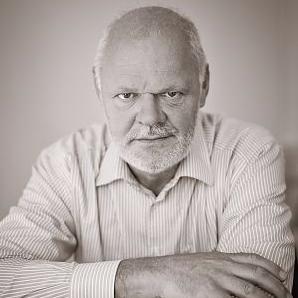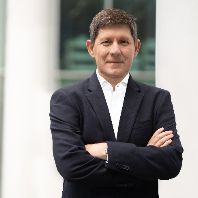What’s the history of Chapman Taylor?
Chapman Taylor’s office in Milan has been open since 2002; before that we were working in association with an engineering company in Bologna, starting with them in 1994.
When we opened there was a lot of risk in the Italian market, it was never very stable, so having people on the ground who knew what they were doing rather than working with those travelling from England was better. We managed to get a lot of projects, the only problem was our Italian clients wanted us to execute the projects in London not Italy. We could do the concepts in the UK but with operational costs much higher than in Italy, since the Italian fees were very low, we felt the working drawings should be done by our engineering company in Bologna. Unfortunately it didn’t work that way for us, so we ended up doing the projects in the UK with high associated costs for lower Italian fees. The only solution was to open an Italian office completely owned by Chapman Taylor, so we did that in 2002.
So of course, all these years between were really important formative years, bringing in clients. When we started in Italy, we were working from the UK on retail projects for a French developer in Italy as retail specialists. From there we built our Italian client base, so from that perspective we are quite particular as we didn’t come from working with big international developers, we worked predominantly regionally. It really saved our bacon – in the first economic crisis foreign investment dried up so working like this on a more local level really helped us and we were consequently very successful working in Italy.
How does the business operate today?
We are an LLP, owned by four partners but all the offices abroad are in a way independent. We share the same name but set up in the countries they operate as limited liability companies, run by managing directors specific to that country that are given autonomy to run the business and responsibility for our own clients. This gives us a real edge; you feel you are running your own business and have little interference from the owners. They have appointed us to run the business and it’s up to us to find clients, manage finances, and lead projects. However, it also gives up the opportunity to collaborate cross border, partnering with other offices which can work really well.
What’s in the pipeline for Chapman Taylor?
We are working on two of the biggest retail projects in Europe, both in Italy. They are still a little confidential at this stage but in Italy we call this “the secret of Pulcinella"– a secret all the world knows about! One is in Rome, the other in Milan.
We are also working on a very specific project – a technology park in Bolzano, capital of Trentino Alto Adige, which is a mainly German-speaking region in northern Italy. The region has autonomy of its own finances and is consequently investing quite a lot in innovative technologies, development and sustainability. This is what the technology park will excel at. The project was won in an international competitive pitch back in 2008, and it was a really proud moment when we won against some of the biggest international architectural companies. It will be tailored towards start-ups and established tech companies and the building will be zero-energy. I don’t always believe in that – people forget that the building has been built from something – but it’s a good aspiration.
Is sustainability a key focus for clients at the moment?
In commercial real estate our clients see the project as cash machines and are not often intellectually driven or challenged to deliver the latest sustainable technologies as they could. Ultimately the project needs to bring in money. Some are starting to look at sustainability and green energy because they need to sell the project to funds – but I don’t think this is their primary preoccupation. It should be. These are very big buildings and they can produce a huge amount of pollution; if clients looked at this and produced a building that responds to these kinds of changes and parameters [sustainability and zero-energy] their management costs could be substantially lower. Like everything people will take time to understand the changes, however building a development that is sustainable is not that much more expensive than a normal building. Design choices made at the right time drives that, rather than making the mistakes and having to correct it later in the process.
Looking at how commercial developments are changing, how will we see retail projects evolve in the future?
In my opinion – don’t get me wrong – we talk a lot about innovative retail schemes, which maybe look innovative, but in terms of how they are designed, if you search deep down a retail scheme is a retail scheme. You have the concourse, the MSUs, the big and small shops and if they are not laid out in a certain way they won’t work. You can talk about sustainability, passive energy capture, to improve the building, but the layout doesn’t really change. Look at cars, the basic machine didn’t change the last hundred years; the engine is still there, the wheels, etc. just the details, technology and presentation of the product went miles ahead in comparison with our building industry. There are no revolutionary alterations, but what I think will create change in the near future is e-commerce. This will influence the traditional layouts as when we talk about centres in the future they will be much smaller in GLA compared to today’s centres, as e-commerce is combined in the experience, reducing the need for so much space. I don’t think retail changes a lot but I can see smaller centres in Italy being phased out, victims of e-commerce growth.
For me, shopping centres in Italy are not the future. We will always work on it – that’s what Chapman Taylor is known for – but it’s working on other types of buildings like hospitality, leisure, airports, transportation projects in general and mixed-use developments, where we should concentrate to secure our future in Italy. Italy is the ideal country to do that, it’s how we operated traditionally at the turn of the century with retail based in the city centre mixed with residential or office use. The shopping centres as we know them today are an American concept transported to Europe, modified by the French to include their hypermarkets. Neighbourhood retail is coming back in town centres, rather than draining everything out to the regional centres in periphery. They will both have a future if sensibly planned but it will take more thought process and informed decision.
About Chapman Taylor
Chapman Taylor is a multi-award winning international practice of architects, masterplanners and interior designers. With experience in every major industry sector, we specialise in Retail, Leisure, Hospitality, Residential, and Office design and, in particular, the combination of these uses into large scale mixed-use environments. Operating from 19 regional design studios across Asia, Central & South America, Europe, and the Middle East, we have designed 2000+ ground-breaking developments across 90 countries.















